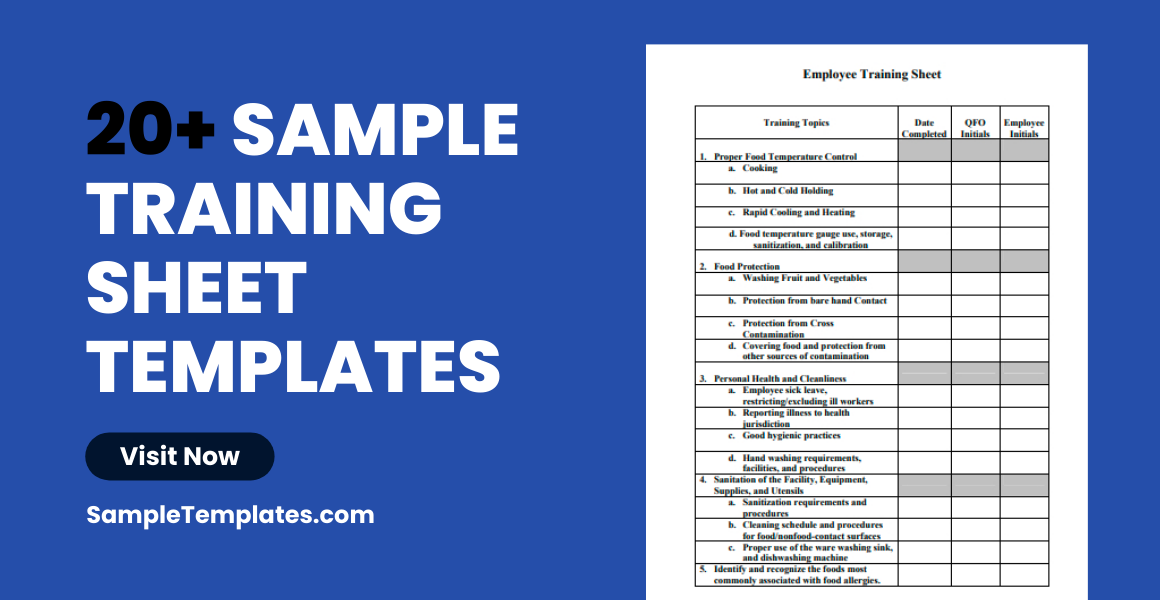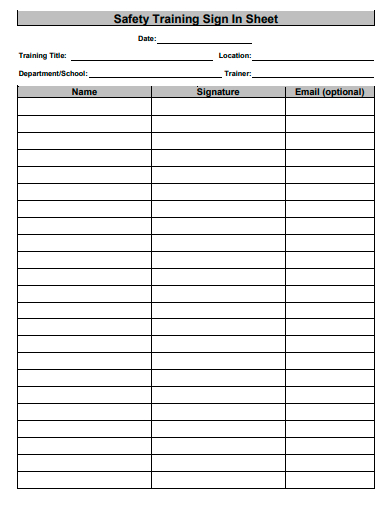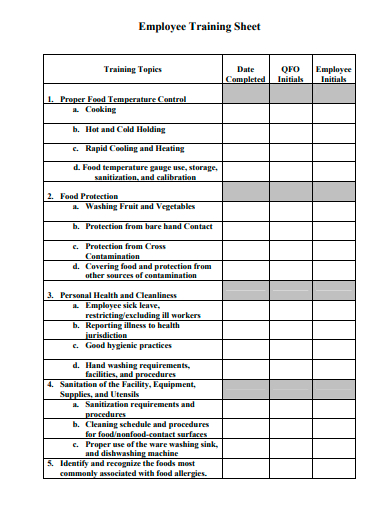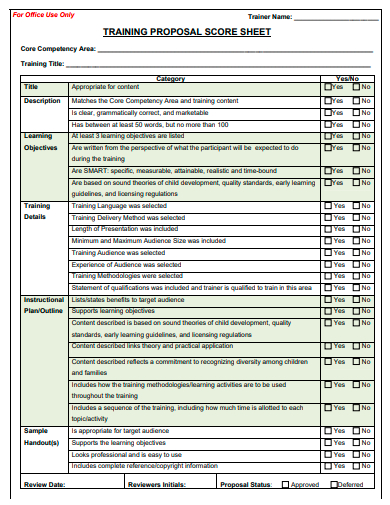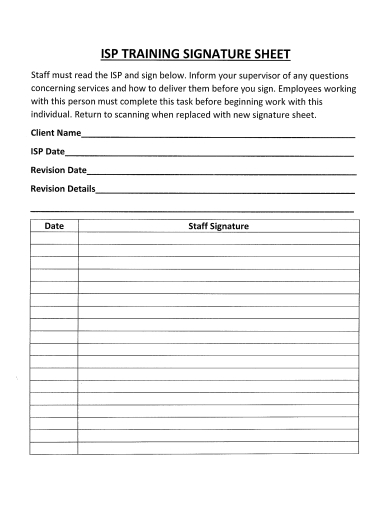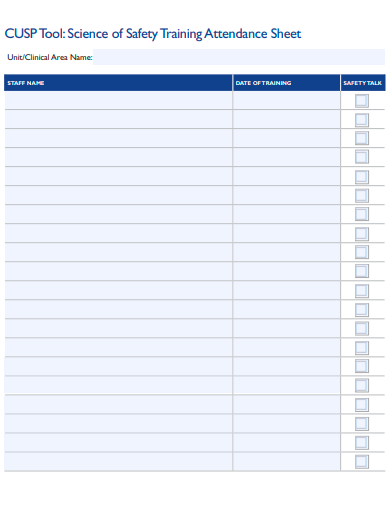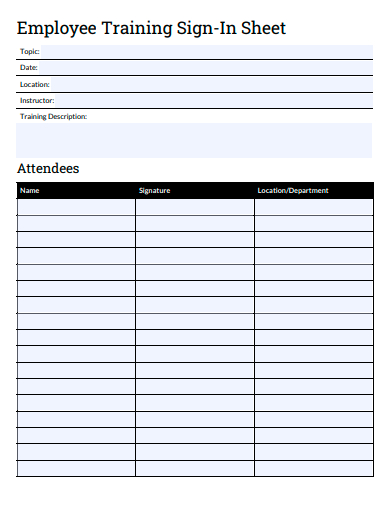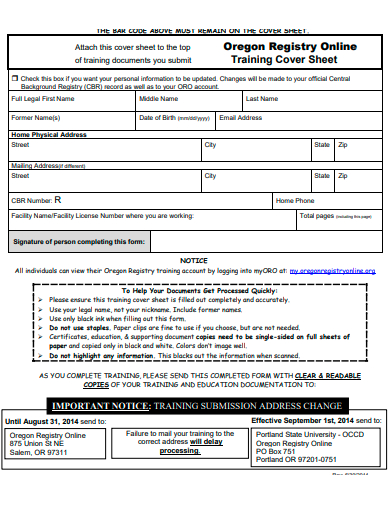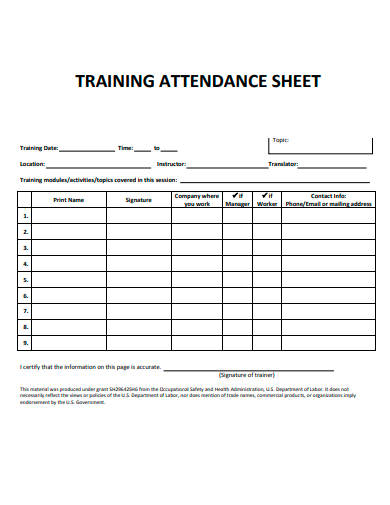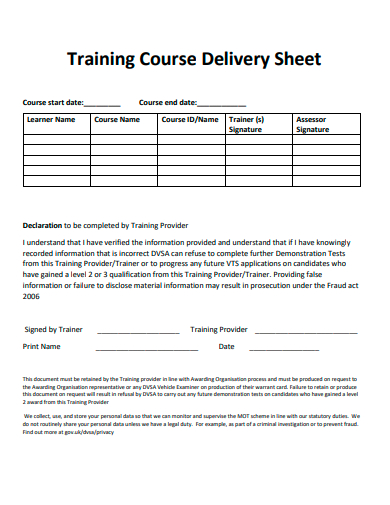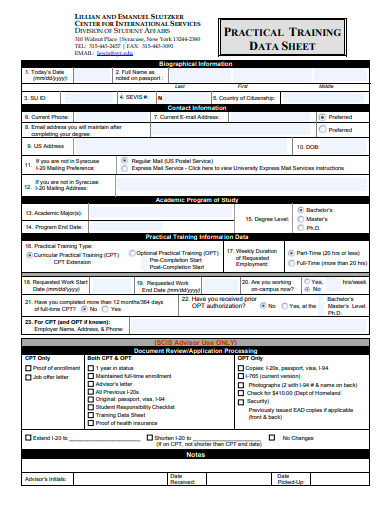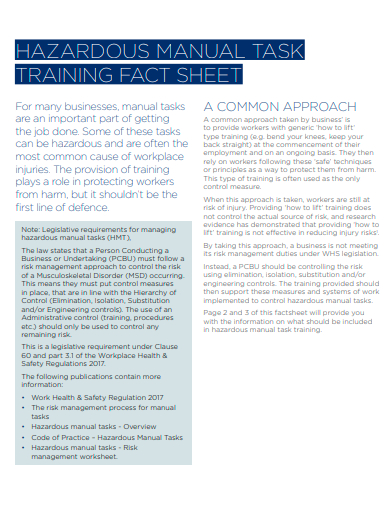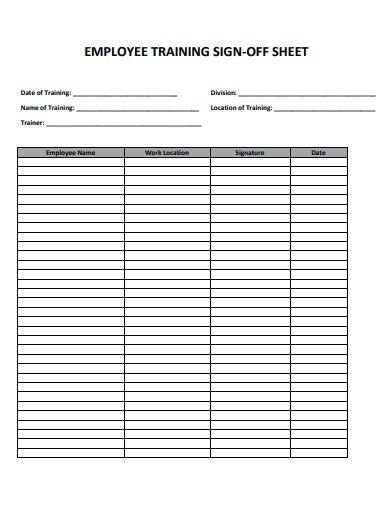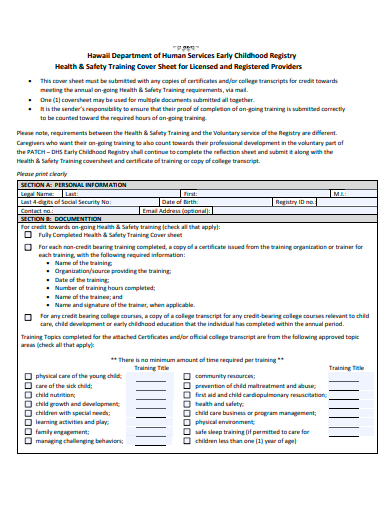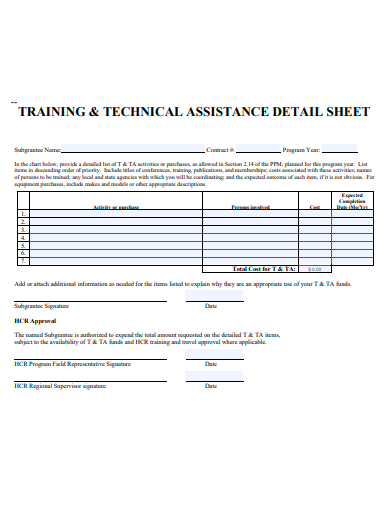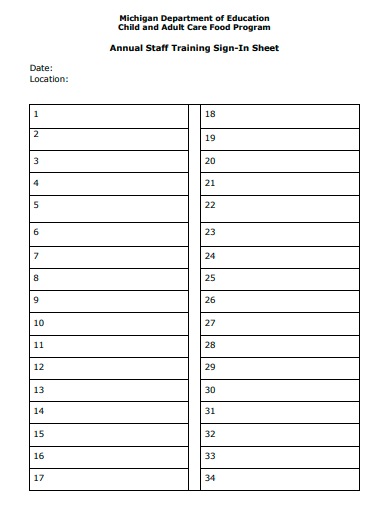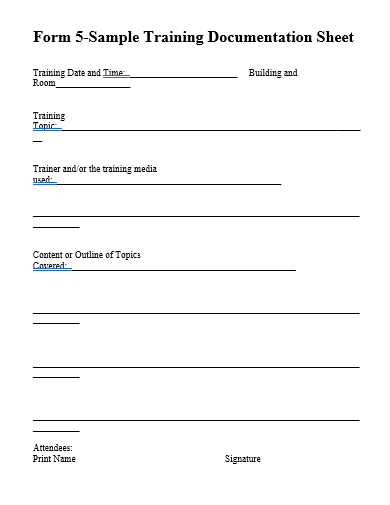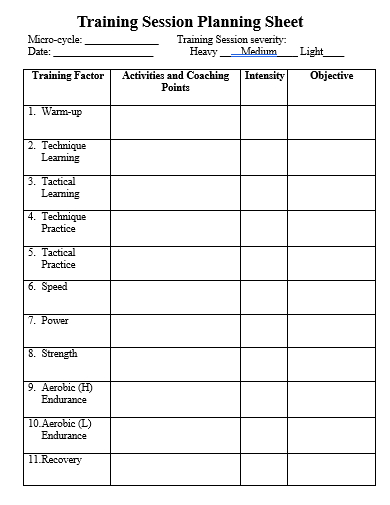Unlock your team’s full potential with our Sample Training Sheet Template. Designed to seamlessly integrate with any training plan, this template serves as the cornerstone for efficient skill development and knowledge transfer. Whether you’re mapping out a comprehensive training strategy or enhancing specific sessions, our resource-rich design ensures optimal learning outcomes. Step up your training game, streamline content delivery, and witness measurable progress. Dive in to experience a transformative approach to training!
20+ Training Sheet Samples
1. Free Workout Training Sheet Template
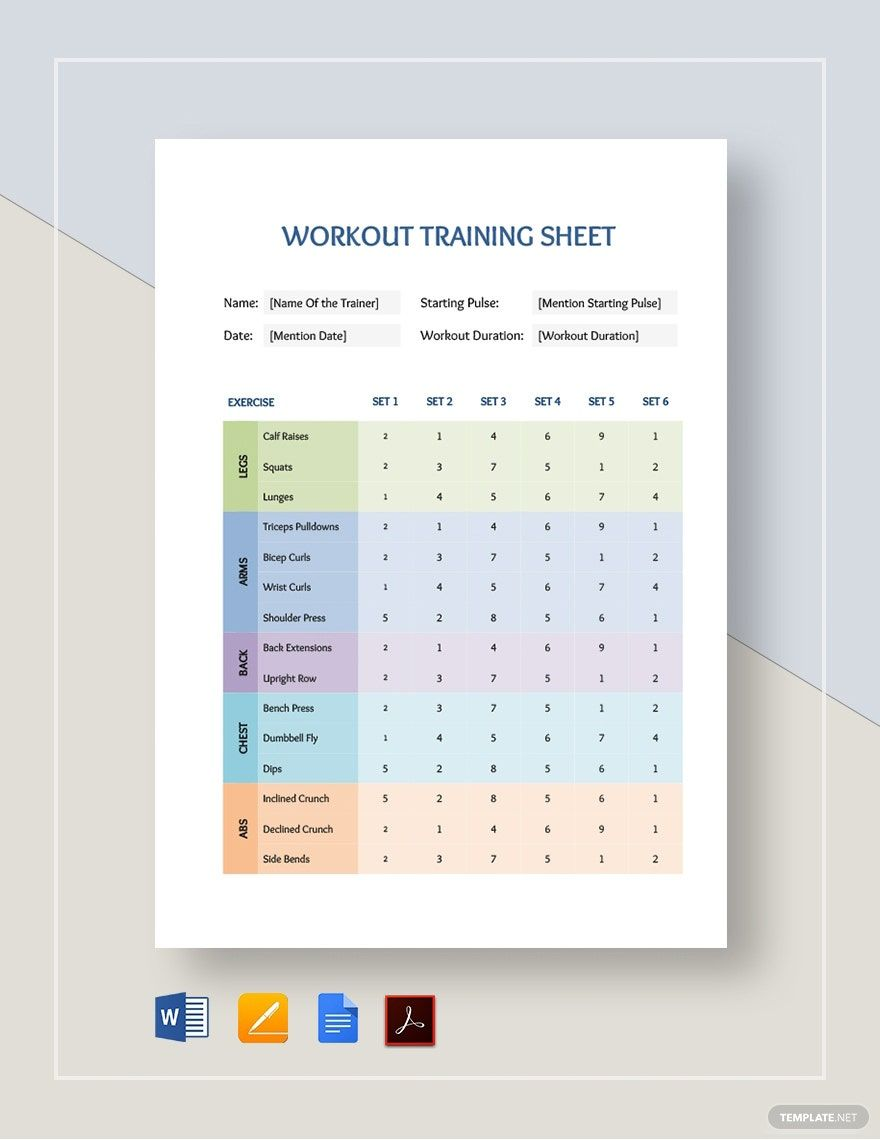
2. Training Sheet Template
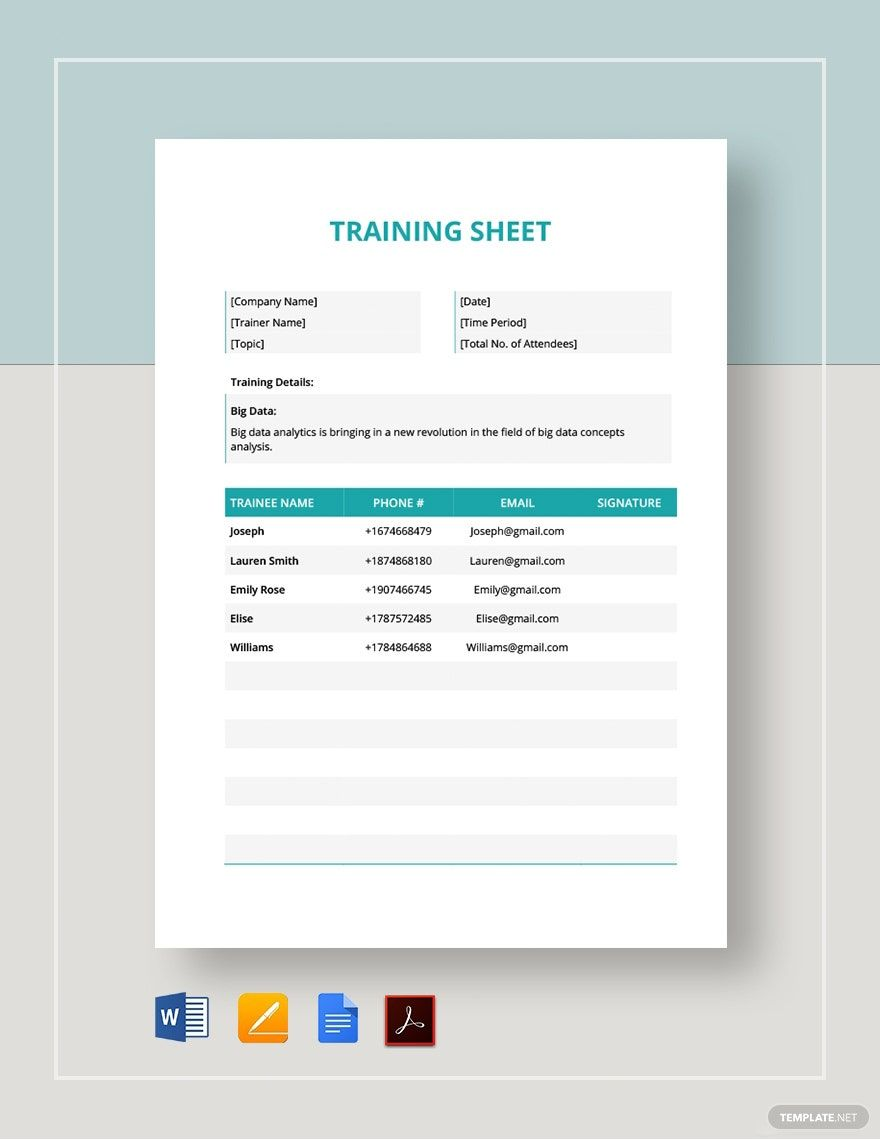
3. Safety Training Sign in Sheet Template
4. Employee Training Sheet Template
5. Training Evaluation Sheet Template
6. Training Proposal Score Sheet Template
7. Training Signature Sheet Template
How to Make a Training Sheet
Training sheets are indispensable tools for any organization or individual aiming to teach or learn a new skill, ensure uniformity in instruction, or simply improve performance. They act as a sample roadmap, guiding both the trainer and the trainee through a structured learning process. Here’s a step-by-step guide to crafting an effective training sheet:
Define the Objectives:
Before diving into the details, clearly outline what you aim to achieve with this training. Do you want to introduce a new software tool? Improve sales techniques? Or perhaps enhance safety protocols? Clearly defined objectives will serve as the foundation for your training sheet.
Understand Your Audience:
Your training material should cater to its intended audience. Are they beginners or experienced? What is their average age? Do they prefer visual aids or textual content? Knowing your audience helps in tailoring the content to their needs and comprehension levels.
Choose the Right Format:
Decide if your training sheet will be a printed document, a digital file, or an interactive online resource. Consider incorporating varied elements like sample charts, images, or even QR codes linking to video tutorials.
Break Down the Content:
Segment your training material into manageable chunks. This could mean dividing the content into modules, sections, or even day-by-day breakdowns. Breaking down the content ensures a gradual, step-wise learning process.
Include Practical Examples:
Theory is vital, but practical examples make the content relatable. If you’re teaching a sales technique, for example, include a real-life scenario. It helps trainees understand the real-world application of the knowledge.
Integrate Assessment Tools:
Regular assessments, like quizzes or feedback forms, can be embedded within your training sheet. They offer an opportunity to measure comprehension and make necessary adjustments.
Incorporate Visual Aids:
Visual aids such as graphs, flowcharts, and images can enhance comprehension. They break the monotony of text and offer a different perspective on the material, aiding in retention.
Feedback and Iteration:
Once your draft is ready, seek feedback from a small group. This can be peers, potential trainees, or experts in the field. Use their input to refine the training sheet.
Regular Updates:
The world is constantly evolving, and so should your training material. Regularly review and update your training sheet to keep it relevant and in line with any industry or organizational changes.
Distribution and Accessibility:
Finally, ensure that your training sheet is easily accessible. This could mean distributing printed copies, sharing digital files via email or cloud storage, or even hosting it on an internal company portal.
In conclusion, a well-crafted training sheet is more than just a document; it’s a strategic tool that paves the way for effective learning and performance enhancement. By following the steps outlined above and continuously refining based on feedback and changing needs, you can create a training sheet that truly makes a difference.
8. Science of Safety Training Attendance Sheet Template
9. Employee Training Sign-In Sheet Template
10. Training Cover Sheet Template
11. Training Attendance Sheet Template
12. Training Sign-In Sheet Template
13. Training Course Delivery Sheet Template
Why Do You Need a Training Sheet?
Training sheets, often overlooked, are the silent architects behind many successful training programs. They act as a blueprint, guiding trainers and learners alike on a well-defined path to achieving specific learning outcomes. If you’re deliberating the necessity of a training sheet, here’s why it’s not just beneficial but essential:
Clear Learning Objectives:
A training sheet begins with clearly defined objectives. It outlines from the start what the end sample goal is, ensuring both the trainer and the trainee know what to aim for. This clarity reduces ambiguity and ensures a more focused approach to training.
Structured Learning Process:
Training sheets provide a systematic structure to the learning journey. Instead of random bursts of information, learners receive knowledge in a logical sequence, making the absorption process more intuitive and effective.
Consistency and Standardization:
Especially in larger organizations, training sheets ensure that everyone receives the same quality and depth of instruction. It avoids discrepancies that could arise from different trainers having varied approaches or knowledge levels.
Time-Efficient:
With a predefined plan in place, a lot of the guesswork is eliminated. Trainers can move smoothly from one module to another without wasting time deciding what comes next. This efficient flow can result in shorter training periods without compromising on quality.
Performance Metrics:
Many training sheets come with built-in assessment tools. These can range from simple quizzes to more elaborate project assignments. They provide immediate feedback on the learner’s performance, making it easier to identify areas that might need more focus.
Boosts Confidence:
For the trainee, having a tangible roadmap can be reassuring. They’re not plunged into an unknown territory but have a clear view of what lies ahead. This can reduce anxiety and boost confidence, leading to better engagement with the material.
Resource Optimization:
Training sheets can be seen as repositories of distilled wisdom. Instead of sifting through vast amounts of material, trainers and trainees have access to a concise, optimized version of what they need. This not only saves time but also ensures that resources like books, online courses, or expert sessions are used judiciously.
Facilitates Remote Learning:
In an increasingly digital world, many training sessions occur remotely. Training sheets can be shared digitally, ensuring that distance is not a barrier to standardized, high-quality learning.
Ease of Updates:
Industries evolve, and training needs can change. With a training sheet, updating content becomes a structured process. You can pinpoint where changes are needed and make them without overhauling the entire program.
Documentation and Reference:
Post-training, these sheets serve as excellent reference material. Instead of relying on memory or scattered notes, trainees have a consolidated document that they can revisit whenever they need a refresher.
In essence, a training sheet is more than just a piece of paper or a digital document. It embodies the training program’s spirit, ensuring clarity, consistency, and quality in the delivery and reception of knowledge. In an era where efficient learning is key to staying ahead, training sheets are not a luxury but a necessity.
14. Practical Training Data Sheet Template
15. Training Fact Sheet Template
16. Employee Training Sign-Off Sheet Template
17. Health and Safety Training Cover Sheet Template
18. Training and Technical Assistance Sheet Template
19. Annual Staff Training Sign-In Sheet Template
20. Training Documentation Sheet Template
21. Training Session Planning Sheet Template
Essential Components of an Effective Training Sheet
An efficient training sheet is more than just a collection of information. It’s a strategic document designed to enhance the learning experience. To ensure its effectiveness, certain core components must be integrated. Here’s a deep dive into these essential elements:
Heading and Synopsis:
Start with a clear and descriptive heading that encapsulates the training’s essence. This should be followed by a concise summary, giving participants a preview of the forthcoming content.
Goals of Training:
Articulate the primary goals you aim to achieve through the training. These goals provide both the trainer and trainee with a sense of direction and purpose.
Target Demographic:
Specify the intended participants for the training. Tailoring content to suit novices, intermediate learners, or experts ensures its relevance and maximizes engagement.
Structured Content Layout:
Organize the material into distinct topics or units for ease of understanding. Each segment should focus on a unique aspect or skill, providing a logical progression.
Teaching Techniques:
Outline the pedagogical methods you’ll employ, be it interactive sessions, multimedia presentations, or practical exercises. This clarity aids trainers in preparation and sets participant expectations.
Graphics and Illustrations:
Incorporate relevant images, charts, and case studies to simplify intricate concepts. Visual tools not only break up text but also cater to varied learning styles.
Evaluation Mechanisms:
Embed tools like quizzes or project assignments to gauge participant comprehension. These metrics help in identifying and addressing knowledge gaps.
Timing and Itinerary:
Detail the anticipated time allocation for each topic or unit, assisting in effective pacing. For extended trainings, a day-by-day breakdown is beneficial.
Supplementary Materials:
Suggest further reading options, such as articles, online resources, or books. This encourages participants to explore topics in more depth at their own pace.
Engagement Tools:
For digital formats, add features like hyperlinks, embedded videos, or interactive quizzes to enrich the learning journey.
Key Highlights:
Conclude each segment with a brief recap of its main points. These act as memory anchors and are invaluable during future revisions.
Helpline and Feedback Channels:
Share contact details for queries or assistance, ensuring participants have a lifeline if they need clarifications or want to provide feedback.
In summation, a training sheet is a blend of various components, each contributing to a holistic learning environment. By weaving these elements together thoughtfully, one can create a training resource that’s both informative and captivating.
Related Posts
FREE 5+ Construction Bid Sheet Samples in PDF | MS Word | Excel
FREE 15+ Construction Timesheet Samples in PDF | MS Word
FREE 26+ Construction Sheet Samples in MS Word | Google Docs | Excel
FREE 20+ Continuation Sheet Samples in PDF | MS Word
FREE 25+ Program Sheet Samples in MS Word | Google Docs | Pages | PDF
FREE 33+ Student Sheet Samples in PDF | MS Word
FREE 32+ Planning Sheet Samples in PDF | MS Word
FREE 10+ OC Sheet Samples in PDF
FREE 10+ Beat Sheet Samples in PDF
FREE 3+ Paper Sign Up Sheet Samples in PDF
FREE 50+ Summary Sheet Samples in MS Word | Google Docs | Google Sheets | Excel | PDF
FREE 10+ Cleaning Bid Sheet Samples [ Commercial, House, Residential ]
FREE 10+ Group Sheet Samples in PDF
FREE 10+ Family Group Sheet Samples in PDF
FREE 5+ Printable Blank Signing in Sheet Samples in PDF
